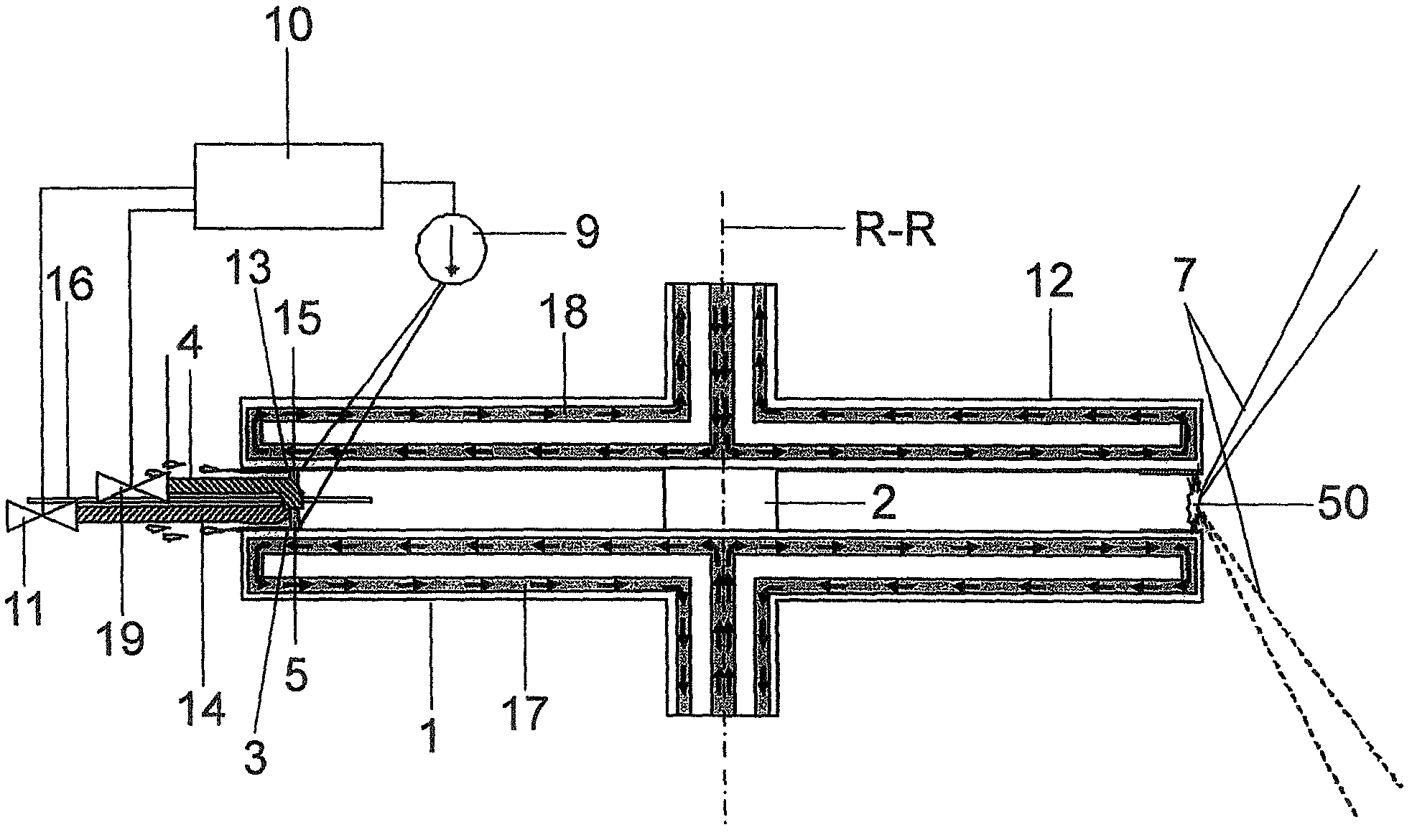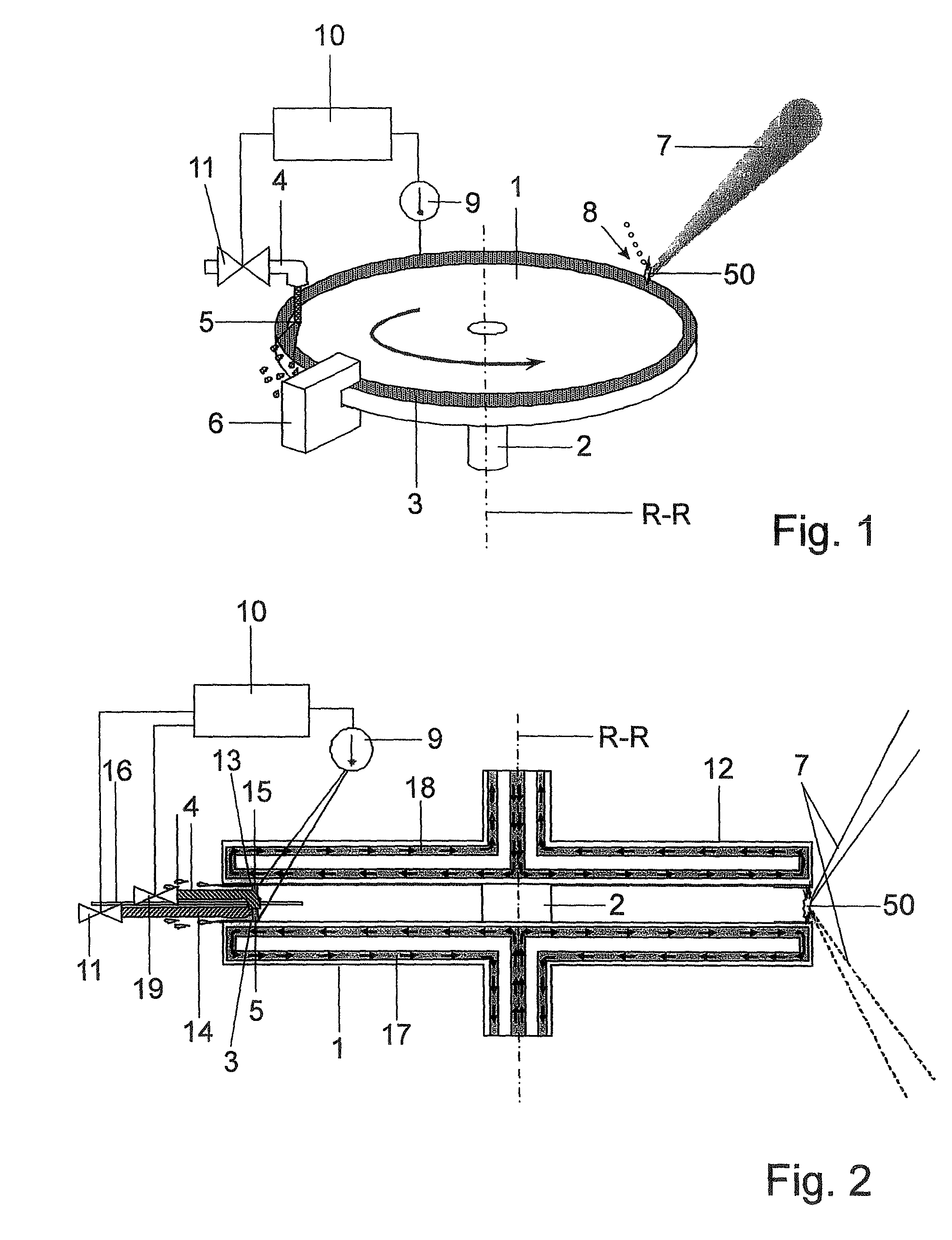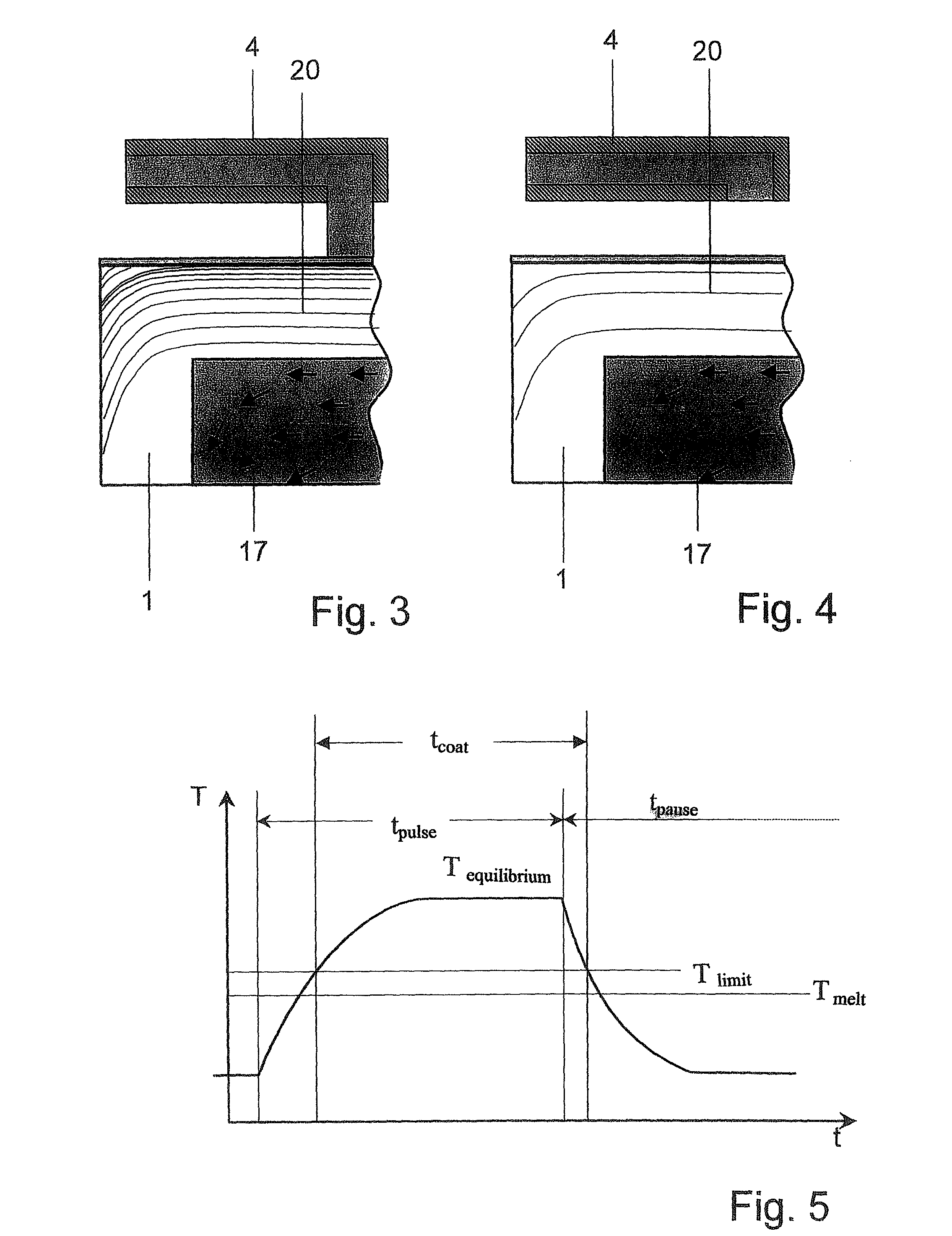Arrangement and method for the generation of extreme ultraviolet radiation by means of an electrically operated gas discharge
an electrically operated gas and gas discharge technology, applied in the direction of optical radiation measurement, instruments, therapy, etc., can solve the problems of insufficient euv projection lithography life of electrodes constructed in these ways, insufficient for the required output specification of an euv source, limited rotation speed of electrodes, etc., to achieve the effect of facilitating the adjustment of layer thickness
- Summary
- Abstract
- Description
- Claims
- Application Information
AI Technical Summary
Benefits of technology
Problems solved by technology
Method used
Image
Examples
Embodiment Construction
[0041]In FIG. 1, which serves to illustrate the principle of the invention, a disk-shaped electrode 1 is rigidly connected to a rotatable shaft 2 in such a way that the center axis of symmetry of the electrode coincides with the axis of rotation R-R. A circumferential edge track on the electrode surface serves as a receiving area 3 for a molten metal, e.g., tin or a tin alloy, and is formed so as to be wetting for this material. Surfaces for the edge track having a wetting action can be, e.g., copper, chromium, nickel or gold. However, a structural steel, heat-treated molybdenum or other electrically conductive materials are also suitable.
[0042]The rest of the electrode surface, or at least a portion of the electrode surface adjoining the receiving area, should not be wetting for the material to be applied because application of the molten metal to these areas is not wanted. Suitable non-wetting surfaces can comprise, e.g., PTFE, stainless steel, glass, or ceramic.
[0043]A coating no...
PUM
 Login to View More
Login to View More Abstract
Description
Claims
Application Information
 Login to View More
Login to View More - R&D
- Intellectual Property
- Life Sciences
- Materials
- Tech Scout
- Unparalleled Data Quality
- Higher Quality Content
- 60% Fewer Hallucinations
Browse by: Latest US Patents, China's latest patents, Technical Efficacy Thesaurus, Application Domain, Technology Topic, Popular Technical Reports.
© 2025 PatSnap. All rights reserved.Legal|Privacy policy|Modern Slavery Act Transparency Statement|Sitemap|About US| Contact US: help@patsnap.com



